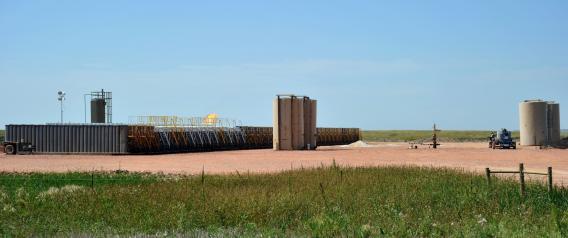On Nov. 12, the International Energy Agency’s annual World Energy Outlook report caused quite a stir by asserting that by 2020, the United States would overtake Saudi Arabia as the world’s top oil producer. Mainstream journalists eagerly repeated this claim.
But the truth is that it relied on a very loose definition of “oil.” Saying that the United States will surpass Saudi Arabia in oil production is a bit like saying that a 12-ounce latte contains more caffeine than 12 ounces of espresso. It might make for an exciting headline and be useful as political fodder, but it’s simply not true.
In 2011, U.S. production of actual crude oil plus condensates (natural gas liquids produced along with the crude) was 5.644 million barrels per day (mb/d). In addition to this, IEA counts 2.2 mb/d of natural gas plant liquids—liquids that are separated from “dry” methane gas at natural gas processing plants—as oil. In 2011, the U.S. produced a total of 7.8 mb/d under this definition.
By 2020, IEA forecasts an additional 2.2 mb/d in “tight oil” production from fracking shale formations like the Bakken in North Dakota and the Eagle Ford in Texas, plus another 1 mb/d of natural gas liquids, for a total of 11.1 mb/d.
By comparing this total to their forecast of 10.6 mb/d for Saudi Arabia, they could say that the United States would surpass the former in oil production by 2020.
However, the comparison isn’t really accurate.
Natural gas liquids, or NGLs, have a variety of uses, but only isobutene, pentane, and “pentanes plus” (also known as “natural gasoline”) are typically used in the making of gasoline. That makes just 30 percent of a barrel of NGLs useful for this purpose. Further, NGLs have only about two-thirds of the energy content (“heating value”) of crude oil. Considering only the NGLs that are usable in gasoline production, and discounting for their energy content, only about 19 percent of a barrel of NGLs should really be counted as vehicular fuel. Basically, then, of the current 2.2 mb/d of U.S. NGL production, only about 0.4 mb/d is actually useful as vehicular fuel.
The meaning of “oil” can be stretched even further. Most journalists cite the “Total Oil Supply” figure published by the U.S. Energy Information Administration (EIA), which was 10.128 mb/d for the United States in 2011. That number includes 1.191 mb/d of “other liquids” (mainly corn ethanol, which also has about two-thirds the energy content of crude) and 1.076 mb/d of “refinery processing gains.” The latter mainly reflects the fact that when crude is refined into lighter products like gasoline, it expands in volume; it doesn’t actually amount to additional energy.
By contrast, EIA’s Total Oil Supply for Saudi Arabia in 2011 was 11.153 mb/d, of which 9.456 mb/d was crude and condensates.
From this we can calculate that only 56 percent of the U.S. total “oil” supply in 2011 was actually crude and condensates—the good stuff. Whereas Saudi Arabia’s supply was 85 percent crude and condensates.
To be sure, U.S. tight-oil production from fracking has been a remarkable phenomenon. It has added more than 1 mb/d to domestic oil output, and it is still increasing. However, even after adding the IEA’s anticipated 2.2 mb/d increase in U.S. tight oil by 2020, the U.S. crude plus condensate total would still be only 8.425 mb/d—less than Saudi Arabia’s current production. The IEA forecasts that Saudi Arabia’s production will be roughly the same in 2025 as it is today, so the United States will not overtake it in actual oil production by 2020 … or ever.
